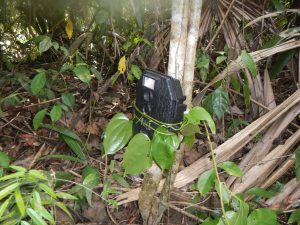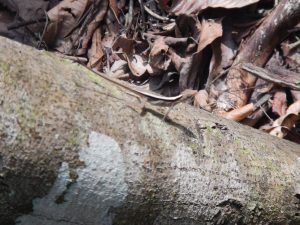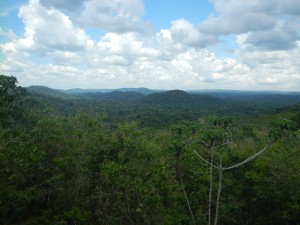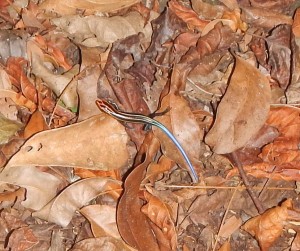Day 4 started by being asked to find the differences in nitrogen limitations on the forest floor and in the canopy. We wanted to make a trap that insects could be attracted to and fall and get stuck in. That means we needed some nitrogenous liquid. One might think finding this is simple, and it was, BUT it’s not pretty. We used our pee in vials, hung them on trees and dug the vials into the ground, and are now waiting to see what is attracted in each location. While it is not a glamorous lab, the look on everyone’s faces when we were told to pee in vials that would be used in the project was hilarious.
(Nitrogen experiment setup diagram)
(Swinging like Tarzan on a water vine!)
After lunch, we set up a second experiment where we tested how the colonization of the cecropia tree with ants vs an uncolonized young cecropia tree varies in defense mechanisms (chemical and physical). Cecropia trees and ants have a mutualistic relationship where ants form their colony in this tree in exchange for protecting the tree from herbivores. We wanted to know if leaves would potentially be thicker, gross, or poisonous before having the ants colonize the tree. We tested this by collecting herbivorous insects in boxes and adding leaves from colonized and uncolonized trees to see which got eaten more.
(Inside of colonized cecropia tree; looks like a ant high rise apartment building)
While hiking to collect the insects and leaves, I saw a large brown skink (lizard) that I have not identified yet. It was about 8 inches and had a long tail. I also saw a silky anole while hiking for setting up the nitrogen lab. Both were on the side of the trail in the shade.
The last two exciting notes about today are potentially the most exciting. First, I got a great look at a toucan in the tree right out front of Las Cuevas! It was not too close, but I used my binoculars and saw the red tail and the large yellow beak very clearly.
Additionally, I heard something loud making screaming sounds from inside the jungle after it got dark. I have been made aware that one animal is known for making a screaming noise, and that is the puma. Hopefully our camera traps catch a picture of it walking by!
See yall soon!
Claire C







